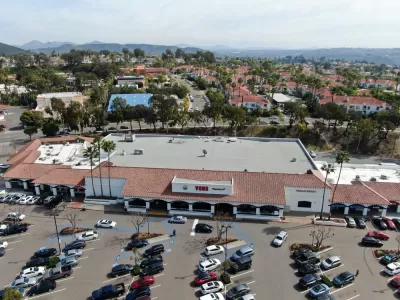A court ruling that calls for environmental impact reviews to account for adjacent developments could significantly affect how government agencies and developers approach projects.

A judge ruled that construction on a 536-unit housing development, planned on the site of a former golf course near San Diego, can’t continue until an environmental analysis is completed, agreeing with a claim that the original review did not take into account other proposed developments that would draw on the same infrastructure and resources. David Garrick reports on the story for the San Diego Union Tribune.
As Garrick explains, “The resident group that had sued to stop the Junipers called the ruling a victory for San Diego’s neighborhoods because it will require developers to provide more robust mitigation when they build impactful, dense projects.” The group wants the developer to pay for the construction of more fire evacuation routes.
“If the ruling isn’t overturned on appeal, attorneys for Lennar and the city say it could have far-reaching impacts on how government agencies must analyze the effects dense housing projects might have on traffic, noise and wildfire threats.” The ruling could make the process much more cumbersome if EIRs had to be revised when new projects were proposed, lawyers for the developer argued, and could impact the rate of development in San Diego County, where housing costs, like elsewhere in coastal California, are on the rise.
FULL STORY: Judge halts Junipers housing in Rancho Penasquitos over EIR

Planetizen Federal Action Tracker
A weekly monitor of how Trump’s orders and actions are impacting planners and planning in America.

Maui's Vacation Rental Debate Turns Ugly
Verbal attacks, misinformation campaigns and fistfights plague a high-stakes debate to convert thousands of vacation rentals into long-term housing.

Restaurant Patios Were a Pandemic Win — Why Were They so Hard to Keep?
Social distancing requirements and changes in travel patterns prompted cities to pilot new uses for street and sidewalk space. Then it got complicated.

In California Battle of Housing vs. Environment, Housing Just Won
A new state law significantly limits the power of CEQA, an environmental review law that served as a powerful tool for blocking new development.

Boulder Eliminates Parking Minimums Citywide
Officials estimate the cost of building a single underground parking space at up to $100,000.

Orange County, Florida Adopts Largest US “Sprawl Repair” Code
The ‘Orange Code’ seeks to rectify decades of sprawl-inducing, car-oriented development.
Urban Design for Planners 1: Software Tools
This six-course series explores essential urban design concepts using open source software and equips planners with the tools they need to participate fully in the urban design process.
Planning for Universal Design
Learn the tools for implementing Universal Design in planning regulations.
Heyer Gruel & Associates PA
JM Goldson LLC
Custer County Colorado
City of Camden Redevelopment Agency
City of Astoria
Transportation Research & Education Center (TREC) at Portland State University
Jefferson Parish Government
Camden Redevelopment Agency
City of Claremont



























